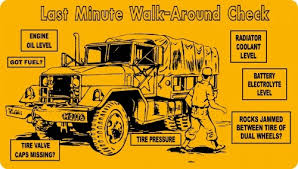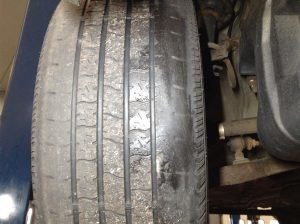 Think about the days when you walk toward your vehicle. Are you going somewhere? Is it important that you arrive as quickly as possible? We all go to our vehicle when we want to go somewhere. Then we have the expectation of arriving at our destination in a set amount of time. It may be a trip to the store, your job, or to visit friends and family. We should have that expectation. It is part of why we own a car to drive. However, since things can often go wrong, you may want to consider doing mechanical checks before you drive.
Think about the days when you walk toward your vehicle. Are you going somewhere? Is it important that you arrive as quickly as possible? We all go to our vehicle when we want to go somewhere. Then we have the expectation of arriving at our destination in a set amount of time. It may be a trip to the store, your job, or to visit friends and family. We should have that expectation. It is part of why we own a car to drive. However, since things can often go wrong, you may want to consider doing mechanical checks before you drive.
Why Perform Mechanical Checks?
 Anyone who has ever broken down on the side of the road can tell you that there is nothing more frustrating. A mechanical failure that leaves you sitting on the roadside or one that makes you late for an important meeting, is never enjoyable. Yet, it can happen to anyone at any time. Belts can break, batteries can die, and other mechanical things can go wrong.
Anyone who has ever broken down on the side of the road can tell you that there is nothing more frustrating. A mechanical failure that leaves you sitting on the roadside or one that makes you late for an important meeting, is never enjoyable. Yet, it can happen to anyone at any time. Belts can break, batteries can die, and other mechanical things can go wrong.
Then, you also have to worry about getting pulled over for something as simple as a missing tag light. Although it is a simple infraction and you will likely drive off with only a warning to get it fixed, who has the time to deal with it? Wouldn’t you be better off to do a “walk around” to make sure that everything is safe and operational so that you can avoid delays?
Areas of Your Car to Check Daily
 Driving-related issues are a common problem. This is one of the reasons driving is considered dangerous. It is backed by an unfortunate 1.24 million deaths globally, per year. Not only must you worry about poor drivers and lousy road conditions; you must also worry about your own vehicle if you want to arrive safely at any destination. Therefore, it is recommended that you take a moment to check over your vehicle daily.
Driving-related issues are a common problem. This is one of the reasons driving is considered dangerous. It is backed by an unfortunate 1.24 million deaths globally, per year. Not only must you worry about poor drivers and lousy road conditions; you must also worry about your own vehicle if you want to arrive safely at any destination. Therefore, it is recommended that you take a moment to check over your vehicle daily.
Some of the common things you should look at on your vehicle include:
*Lights: All should be in working order.
*Windshield Wipers: Even if you are not expecting rain, you do not need streaks hiding what may be in front of you during sudden showers.
*Seat Belts: By law, you should wear your seatbelt, but it still doesn’t hurt to check it. Make sure when you snatch it, it locks.
*Horn: A horn is a good way for you to communicate with other drivers or chase away stray dogs that may be in the road.
*Tires: Your vehicle’s tires should never appear worn, lumpy, or bare. If you can see threads, you need to replace them before you can drive safely. You should also check the air pressure in them.
*Battery: Most batteries do not have issues, but you still need to check it often. Look for corrosion and check to see what type of charge is on it. A low charge could indicate alternator problems or weak cells. You can easily try a marine battery tester to get a glimpse into your batteries health.
As an added bonus, simply walking around your vehicle can tell you one of the most important things about your vehicle. It can tell you if a child’s toy, bike, wagon, or even the child is behind your vehicle before you start backing out of the driveway.
Longer Trips Require More Effort
If you are going on a long road trip, you may also want to check your brakes, steering wheel mechanism, and other things to ensure that every aspect of your vehicle is safe and dependable. Doing this will not prevent all problems, but it can help.